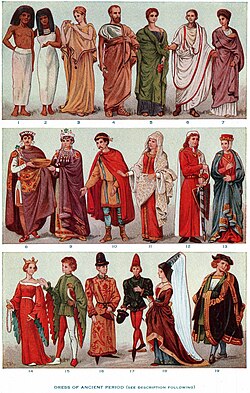- Ascot tie and pin (1904)
- Boni de Castellane, unknown date
- George Augustus Sala, British journalist; after 1863
- John Singer Sargent in a pleated Ascot tie c.1880

An ascot tie, or simply ascot, is an article of neckwear with wide pointed wings at the end, wrapped around the neck and draped down the chest to cover the front placket and button line of a dress shirt. A similar form of neckwear is called a modern cravat,[ how? ] worn for different occasions than an ascot. Both ascot ties and cravats are in the lexicography of British English and American English, and they should not be used interchangeably. The key distinction between an ascot tie and a modern cravat is how they are presented visually around the neck – an ascot feature a distinctive knot, while a modern cravat form a solid band across the neck. Generally, an ascot is worn around a buttoned winged shirt collar and tied at the front, whereas a modern cravat is worn untied underneath an unbuttoned, open shirt collar. This wider relative of the necktie, an ascot tie is folded over, and usually fastened with an ascot tie pin, tie clip, or an ascot ring to secure the folds beneath the knot. It is usually reserved for formal wear with morning dress for daytime weddings being worn with a cutaway morning coat and striped grey formal trousers. Ascots are traditionally made of patterned silk. While earlier cravats were only found in certain colors due to the difficulty of obtaining and manufacturing pigments and dyes, today's ascot ties can be found in nearly any colour, but is usually seen in neutral tones to match with the dress shirt and suit jacket or dinner jacket (tuxedo), with which it might be paired.
















